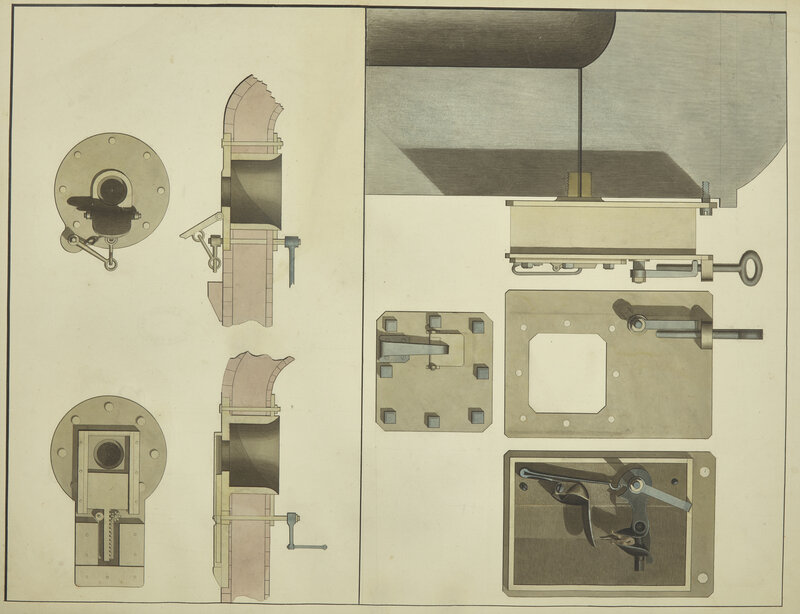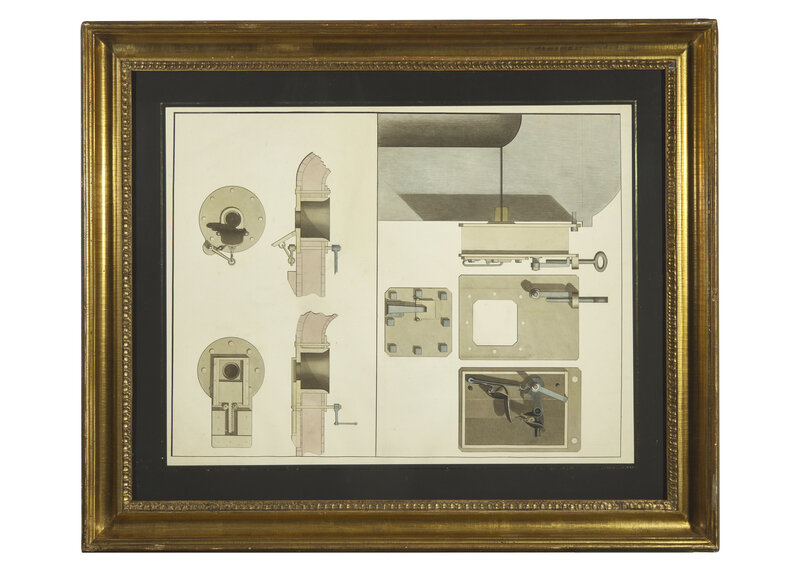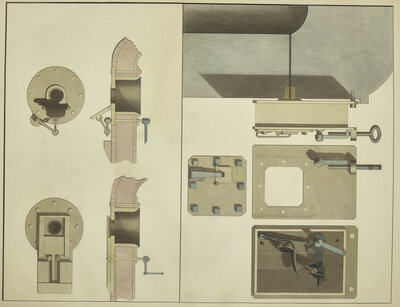Lot 13
[Americana] Fulton, Robert. Original Drawing of a Detonator and Muzzle for an Underwater Cannon
Sale 2101 - Books and Manuscripts
Sep 10, 2024
10:00AM ET
Live / Philadelphia
Own a similar item?
Estimate
$8,000 -
12,000
Lot Description
[Americana] Fulton, Robert. Original Drawing of a Detonator and Muzzle for an Underwater Cannon
(New York, ca. 1807). Pen and ink with watercolor on paper. Expertly repaired closed tear in bottom left; New Jersey Historical Society ink stamp on verso. 20 1/2 x 28 in. (521 x 711 mm). In mat and in frame, 28 1/2 x 34 in. (724 x 864 mm).
A fine original drawing by American engineer and inventor Robert Fulton, showing details of flintlock detonators for submarine bombs and underwater guns.
Robert Fulton studied painting under Benjamin West, and launched the first successful paddle-steamer service in the world, designed and tested the first practical submarine, and significantly advanced the design of submarine torpedoes and torpedo boats.
Born in Lancaster County, Pennsylvania, Fulton moved to England in 1786 to study painting. His practical experiments with submarine torpedoes and torpedo boats began with his move to France in 1797 and culminated in the testing of the first practical submarine (The Nautilus) in 1800. In 1804 he moved back to England and continued his experiments with torpedoes in tandem with his overseeing the construction of a steam engine to power a boat that he had designed. In late 1806 he returned to the United States to supervise the construction of what was to become the North River Steamboat or Clermont. While this was going on he also continued with his experiments with torpedoes and submarines: his "torpedo" bombs were tested in New York Harbor and he published a pamphlet, "Torpedo War and Submarine Explosions," in 1810. With government support, he continued his experiments, and with the outbreak of the War of 1812, he concentrated on his "submarine gun," a precursor of modern torpedo techniques.
This drawing is divided into two parts. The left side shows various sections and details of a flintlock mechanism designed to be watertight and used underwater. The right appears to show two alternative designs for a waterproof gun muzzle: one with a waterproof hatch lowered using a toothed cog, the second, a flap lowered using a lever system.
The drawing was de-accessioned by the New Jersey Historical Society. It originally formed part of a large collection of Fulton's drawings given to the Society in 1855 by the Dutch-born engineer, ethnologist and historian Solomon Alofsen (1808-1876).
This lot is located in Philadelphia.
Condition Report
Contact Information
Auction Specialist



